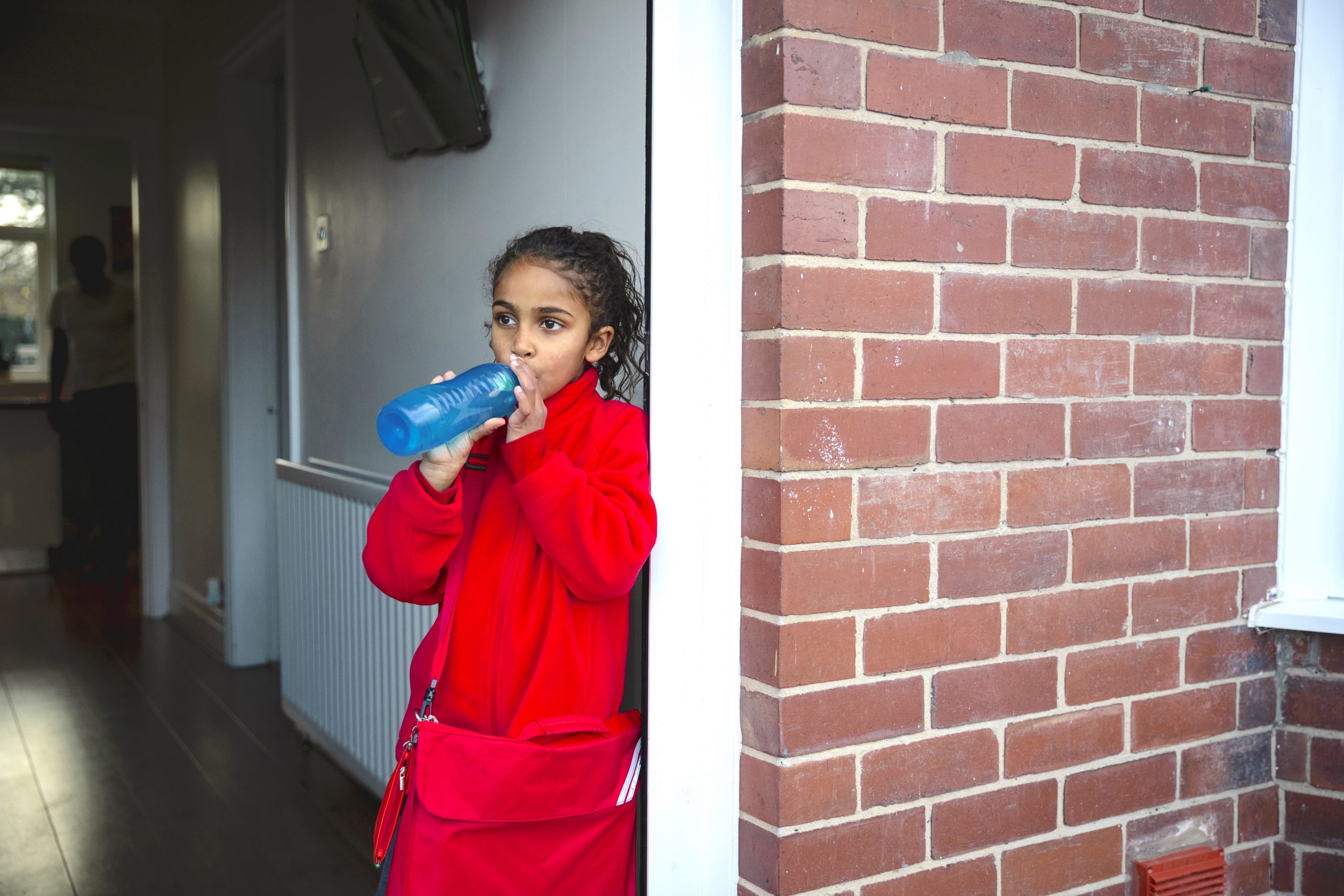In this coffee chat, we shared an overview of our community and hosted roundtable discussions for participants to share and connect with others about their work to advance nutrition, physical activity, and health equity.
Topic: Health Equity
Coffee Chat: Engaging decision-makers to advance healthy eating, physical activity, and health equity priorities
In this coffee chat, Oami Amarasingham, Deputy Director of the Massachusetts Public Health Association, shares tips and insights to help participants learn how to successfully engage decision-makers to advance prevention.
Coffee Chat: Nutrition Strategies that Cost-Effectively Improve Population Health & Health Equity
In this coffee chat, Dr. Steven Gortmaker, Director of the Prevention Research Center on Nutrition and Physical Activity at the Harvard T.H. Chan School of Public Health and Principal Investigator of the CHOICES Project, describes two promising paths to reduce health disparities and improve health equity.
May 2022 Coffee Chat Resource Round-Up
This document compiles resources and information shared during the May 19, 2022 coffee chat, which featured partners who shared how improving access to safe and appealing drinking water in schools and communities is a key strategy for helping children grow up healthy.
Brief: Improving Drinking Water Equity and Access in California Schools

The information in this brief is intended only to provide educational information.
This brief summarizes a CHOICES Learning Collaborative Partnership model examining a strategy to improve access to drinking water in California schools. This voluntary water equity and access program involves the installation of touchless chilled water dispensers on or near school cafeteria lunch lines in K-8 non-charter California public schools that have adequate plumbing.
The Issue
All children should have access to clean, appealing, and free drinking water no matter where they live or where they go to school. Providing appealing access to drinking water gives students a healthier alternative to sugary drinks, like sweetened fruit drinks, sports drinks, and soda. Students drink more water when schools provide access to water at lunch at no charge,1 and improving school water access can help kids grow up at a healthy weight.2,3
In California, one in 10 schools reported having no access to free drinking water where meals are served despite state and federal requirements.4,5 Additionally, only one in five schools reported meeting criteria considered the standard for excellence in water access.4 Creating a healthy, equitable school environment that includes appealing drinking water access can help set children up for a healthy future.
About the Water Dispensers in Schools Strategy
This strategy focuses on increasing water access by installing touchless water dispensers at schools serving primarily families with low income, which also have a greater share of Black/African American and Latino students than other schools in California. Promoting better drinking water access in schools has been shown to increase water intake during the day and may help promote a healthy weight.3 Thus, it is a strategy that can help local health departments reach the twin goals of increasing access to and promotion of safe drinking water while decreasing access to and consumption of sugary drinks.6 Putting this strategy into place would require resources for administering the program, installing and maintaining dispensers, utility and disposable cup usage, lead testing and remediation, and delivering water-promotion education.
Comparing Costs and Outcomes
A CHOICES cost-effectiveness analysis compared the costs and outcomes of installing touchless water dispensers in schools with the costs and outcomes associated with not implementing the voluntary water equity and access program over 10 years (2020-2030).
Installation of touchless water dispensers in schools in California is an investment in a more equitable future. By the end of 2030: |
Conclusions and Implications
Installing water dispensers in K-8 public schools is an effective strategy for increasing access to clean, appealing, and free drinking water. Over 10 years, this strategy is expected to improve drinking water access and consumption for over 1.8 million students in California. This strategy is estimated to prevent 3,660 cases of childhood obesity in 2030 and would cost on average $6 per child to implement each year. Comparatively, the value of lunch served to students is $3 per day or about $600 per year.7 While the costs to implement this strategy would be $21,500 per school over 10 years, there would be an estimated $12 million in obesity-related health care cost savings over the same time period.
Improving students’ access to free, clean drinking water could promote health equity. Latino youth report less availability of drinking water access in schools,8 and Black/African American youth are less likely to be adequately hydrated compared with White non-Latino youth.9 Focusing drinking water access improvements in schools with high percentages of Black/African American and Latino students may benefit these populations the most. In addition to promoting a healthy weight, this strategy may also benefit children in other ways. Adequate water consumption can lead to improvements in well-being and support cognitive function.10 Fluoridated water intake also prevents dental caries.11
Though investment is required, every student deserves access to clean, appealing drinking water, and this strategy can be a part of a suite of interventions that support children and their families. Many preventive strategies play a critical role in helping children establish healthy habits early on in life. Focusing on supporting these healthy habits now can help more children grow up at a healthy weight.
References
-
Bogart LM, Babey SH, Patel AI, Want P, Schuster MA. Lunchtime school water availability and water consumption among California adolescents. Journal of Adolescent Health. 2016; 58(1):98-103, doi: 10.1016/j.jadohealth.2015.09.007.
-
Schwartz AE, Leardo M, Aneja S, Elbel B. Effect of a School-Based Water Intervention on Child Body Mass Index and Obesity. JAMA Pediatr. 2016; 170(3):220-226. doi:10.1001/jamapediatrics.2015.3778.
-
Kenney EL, Cradock AL, Long MW, et al. Cost-Effectiveness of Water Promotion Strategies in Schools for Preventing Childhood Obesity and Increasing Water Intake. Obesity. 2019;27(12):2037-2045.
-
Altman EA, Lee KL, Hecht CA, Hampton KE, Moreno G, Patel AI. Drinking water access in California schools: Room for improvement following implementation of school water policies. Preventive Medicine Reports. 2020;19:101143. Published 2020 Jun 8. doi:10.1016/j.pmedr.2020.101143.
-
California Department of Education. Drinking Water for Students in Schools. Reviewed January 14, 2020. https://www.cde.ca.gov/ls/nu/he/water.asp#:~:text=California%20Education%20Code%20Section%2038086%20states%20that%20if%20a%20school,reasons%20why%2C%20whether%20due%20to. Accessed February 16, 2021.
-
California Department of Public Health. FFY 2020-2022 SNAP-Ed Local Health Departments Programmatic Priorities. Published December 10, 2018. https://www.cdph.ca.gov/Programs/CCDPHP/DCDIC/NEOPB/CDPH%20Document%20Library/Branch16Add2FFY20-22SNAPEdLHD.pdf. Accessed January 29, 2021.
-
California Department of Education. 2019-20 CNP Reimbursement Rates. https://www.cde.ca.gov/ls/nu/rs/rates1920.asp. Accessed December 12, 2020.
-
Onfurak SJ, Park S, Wilking C. Student-reported school drinking fountain availability by youth characteristics and state plumbing codes. Preventing Chronic Disease. 2014; 11: E60, doi: 10.5888/pcd11.130314.
-
Kenney EL, Long MW, Cradock AL, Gortmaker SL. Prevalence of inadequate hydration among U.S. children and disparities by gender and race/ethnicity: National Health and Nutrition Examination Survey, 2009–2012. American Journal of Public Health. 2015; 105(8): e113-8, doi: 10.2105/AJPH.2015.302572.
-
Popkin BM, D’Anci KE, Rosenberg IH. Water, hydration, and health. Nutition Reviews. 2010 Aug;68(8):439-58.
-
American Dental Association and Centers for Disease Control. Nature’s Way to Prevent Tooth Decay: Water Fluoridation. Published 2006. https://www.cdc.gov/fluoridation/pdf/natures_way.pdf. Accessed July 13, 2021.
Suggested Citation:Gouck J, Whetstone L, Walter C, Pugliese J, Kurtz C, Seavey-Hultquist J, Barrett J, McCulloch S, Reiner J, Cradock AL. California: Improving Drinking Water Equity and Access in California Schools {Issue Brief}. California Department of Public Health, Sacramento, CA, the County of Santa Clara Public Health Department, San Jose, CA, and the CHOICES Learning Collaborative Partnership at the Harvard T.H. Chan School of Public Health, Boston, MA; December 2021. For more information, please visit www.choicesproject.org |
The design for this brief and its graphics were developed by Molly Garrone, MA and partners at Burness.
This issue brief was developed at the Harvard T.H. Chan School of Public Health in collaboration with the California Department of Public Health and the County of Santa Clara Public Health Department through participation in the Childhood Obesity Intervention Cost-Effectiveness Study (CHOICES) Learning Collaborative Partnership. This brief is intended for educational use only. This work is supported by The JPB Foundation and the Centers for Disease Control and Prevention (U48DP006376). The findings and conclusions are those of the author(s) and do not necessarily represent the official position of the Centers for Disease Control and Prevention or other funders.
February 2022 Coffee Chat Resource Round-Up
This document compiles resources and information shared during the February 24, 2022 coffee chat, which featured partners who shared creative ways they have brought attention to prevention and health promotion priorities in their communities.
CHOICES Discussion Paper: Cost-Effective Strategies to Prevent Obesity & Improve Health Equity

The information in this discussion paper is intended only to provide educational information.
Abstract
We face growing prevalence of children and adults with obesity in the United States, and widening disparities by race, ethnicity, geography, and income. This growth is driven by many forces, including the marketing of foods and beverages that increase obesity risk as well as deeply rooted social and economic determinants and structural racism. This discussion paper is designed to help public health professionals and community members identify feasible and cost-effective intervention strategies that can prevent future obesity cases among children while improving health equity. We provide examples of such strategies in localities throughout the United States. We build on previous findings in CHOICES briefs that describe how Learning Collaborative Partnerships with health departments and their community partners, together with the CHOICES team, have assessed the future impact of a range of strategies on cases of obesity prevented and health equity. In all cases, the strategies have strong evidence for effectiveness and include: sugary drink excise taxes in Denver, Hawaii, California, and West Virginia; a clinical strategy to treat children with obesity in Denver; an intervention to reduce excess TV viewing in Oklahoma. Projections are made using the CHOICES microsimulation model, taking into account effectiveness of the intervention, expected reach in the population, evidence for intervention cost, and other relevant local data. Definitions of groups experiencing disadvantage and inequities were developed with local decision-makers and community members. Projected effectiveness is expressed as cases of obesity prevented, and improvements in health equity as changes in risk relative to a reference population. These examples describe feasible and cost-effective strategies that can prevent future obesity cases and improve health equity.
Continue reading in the full discussion paper.
Suggested Citation
Gortmaker SL, Bleich SN, Kenney EL, Barrett JL, Ward ZJ, Long MW, Cradock AL. Cost-Effective Strategies to Prevent Obesity and Improve Health Equity. Harvard T. H. Chan School of Public Health, 2021. For further information, contact choicesproject@hsph.harvard.edu and visit www.choicesproject.org
Funding
Funded by The JPB Foundation (Grant No. 1085), the National Institutes of Health (Grant No. R01HL146625) and the Centers for Disease Control and Prevention (CDC) (Grant No. U48DP006376). This work is solely the responsibility of the authors and does not represent official views of the CDC, the NIH, or other agencies.
Intro to Economic Evaluation: How the CHOICES Framework Can Advance Chronic Disease Prevention & Address Health Equity
This is a recording of a training led by Dr. Michael Long and Dr. Stephen Resch. This introductory training looks at how economic evaluation and cost-effectiveness analysis can advance chronic disease prevention and health equity. This training is intended for anyone working in public health with an interest in learning about the key concepts of cost-effectiveness analysis to advance their work.
View the slides from this training.
May 2021 Coffee Chat Resource Round-Up
A collection of health equity promotion resources shared by CHOICES Community of Practice members during the May 2021 coffee chat.
CHOICES Key Terms for Health Disparities & Health Equity
Key terms and definitions related to health disparities, and examples of disparities graphics.
